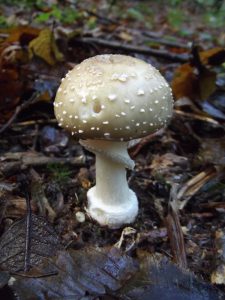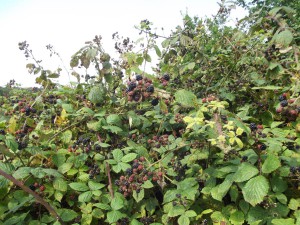Email: geoffdann@hotmail.com
Phone: 07964 569715
04/12/2014
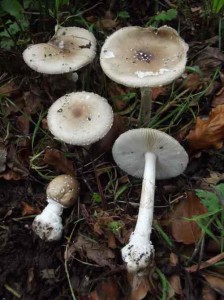
The Panthercap (Amanita pantherina) probably won’t kill you, but it is likely to put you in hospital. This species is normally quite scarce, but it found the unusual weather conditions in 2014 to its liking and was almost as common this autumn as its bright red relative the fly agaric (A. muscaria) (which had a rare bad year).
Well, apart from a few scattered stragglers, mushroom season is all over for another year. 2014 has certainly been a weird one. Unless December gets very cold very soon, this year will go down as the warmest since records began, both in the UK and globally, and while we haven’t had any heatwave, we did have unusual autumn weather. The result was that a lot of normally-common species never really turned up, but quite a few uncommon species had a bumper year. I’ve never seen so many Panthercaps, for example- it’s a shame you can’t eat them. It bodes well for 2015 though, because when fungi take a year off they do tend to bounce back spectacularly the following year.
Anyway, my mushroom season ended with an appearance on Radio Kent, who asked me to take a reporter foraging somewhere in that county. Unfortunately, my map-based instructions involving roads and junctions had been turned into a satnav-friendly postcode by the time they reached the reporter and since car parks in the middle of forests don’t tend to have postal codes, and since there was almost no mobile phone signal, it nearly didn’t happen. Luckily the reporter did eventually find his way to the meeting spot just as dawn was breaking, and we headed off into a nearby stand of conifers.
I had brought a foraging student along with me, and he was kind enough to record the proceedings on his iPad, so you can see a fifteen minute video of the foraging, cook-up and interview here. Thanks to Paul Crosland for doing that.
This one little patch of woodland defied the general trend and produced more finds than I would have expected if we’d spent the whole day walking round the 380 hectare forest that surrounds it. I have no idea what makes that patch so special, but something does, so it’s precise location remains top secret. We found plenty of hedgehog fungi and a patch of their smaller terracotta relatives, several large troops of winter chanterelles, a penny bun (I don’t recall ever seeing one of those in December before), a couple of bay boletes and some shaggy parasols and wood blewits. We didn’t bother picking any of the ochre brittlegills that were liberally scattered all over the place, and I left the solitary charcoal burner (very late for that species too). Not a bad selection in December for a chunk of woodland about 3 acres in size.
One other edible species was abundant, and it warrants a special mention. This is the fungus with perhaps the most unfortunate name of all (dog vomit slime mould isn’t actually a fungus). The Tricholomas have been given the common name “Knight”, and this one, because it supposedly smells of “institutional washrooms”, has the specific epithet “saponaceum”, meaning “soap”. Put those together and you end up with the name “Soapy Knight”. Most sources list this mushroom as either inedible or mildly toxic (who’d want to eat soap, after all?). However, a little bit more research will reveal that there is no information on the toxins supposedly involved, or their effects, and, according to the Food and Agriculture Organisation of the United Nations, it’s been traditionally eaten (although I don’t know where). I’ve eaten it many times, and this year decided to try it on my other half, having not told her beforehand that it allegedly smells/tastes of soap. “Mmmm, I like that. Strong taste! Smoky…meaty…a bit like salami!”, she said. It is indeed edible, but I can’t bring myself to call it by its ludicrous common name, so I think I’ll just stick to Tricholoma saponaceum.
My prices for 2015 and event schedule as currently known are now on this website (see menu at the top of this page). Vouchers are available if you want to give somebody an interesting Christmas gift.
I’ll be blogging again in the new year. I’m planning on making 2015 the year I really get to grips with cooking with wild plants.
Happy holidays,
Geoff

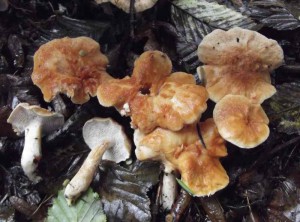
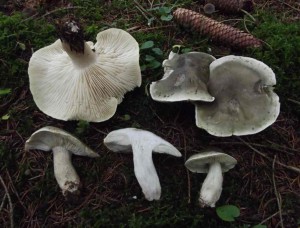
![The Blusher ([em]Amanita rubescens[/em])](https://www.geoffdann.co.uk/wp-content/uploads/2013/08/blusherblog-247x300.jpg)
